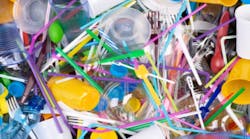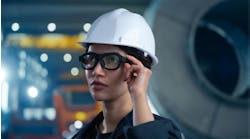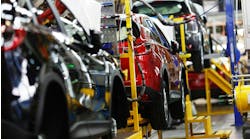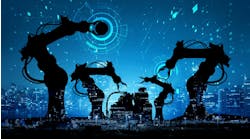Utilizing AI at the design phase to tackle plastic waste
By Dr. Richard Ahlfeld, CEO of Monolith
There have been many environmental ramifications as a result of the international lockdowns across the world. While some of these have had a positive impact, reducing travel or pollution dramatically in some places, there has also been a dramatic decline in plastic recycling across the world.
Since the coronavirus struck, recyclers worldwide have seen their businesses shrink by more than 20% in Europe by 50% in parts of Asia and as much as 60% for some firms in the US. This is due to an unprecedented demand for single use plastics, a safer, more hygienic option for many things—including hospital gowns, masks and food containers—throughout a viral pandemic.
As we slowly begin the transition back into something that resembles normal life, environmentally conscious governments are desperately seeking a way to tackle the plastic tidal wave that’s come as a result of this dramatic global event. Once again, the focus is on reducing plastic and packaging waste, understanding how we can mitigate unnecessary usage, and how we might be able to reuse this material in the future.
Artificial intelligence has been at the forefront of combating huge global issues for some time now—from warehousing and logistic supply chain management to healthcare and medical-imaging analysis. Now, it's uses are being seen in the packaging industry and promises to lead the way in the next evolution of that industry, from production to packaging in a number of guises.
The unseen ways AI has been weaved into production
AI has been leading the way in sustainable packaging for a number of years and has been utilized by Amazon in choosing the optimum package for a product. They have developed an AI model that learns from real-world customer complaints in relations to damaged products and specifies a more appropriate form of packaging. For example, rather than receiving a new set of dishes in a box, the algorithm will suggest padded mailers instead, to protect the dishes and reduce the packaging required.
Another added bonus of this is that the lighter packaging allows for more packages to fit into the delivery truck, reducing the number of trips required and the amount of packaging that will need to be recycled. Amazon has had great success with this model, reducing shipment damages while cutting shipping costs.
Another (often unseen) way that AI helps reduce waste is through recycling systems. Sorting through recycling can be time consuming and wasteful, with just a small percentage of the rubbish the world produces getting recycled each year. A pioneering company called AMP Robotics has created an AI-powered robot called Cortex that can sort through hard to sort recyclables and tell you what should be done with it through the use of optical sensors.
Digital simulations and pinpointing design
While we have touched on the benefits AI can bring to the end of the supply chain, it also plays a huge role in reducing waste at the design state, with the European Union estimating that over 80% of a products’ environmental impact is determined at the design stage.
Historically, the environmental footprint of a product is calculated toward the end of the process, which lengthens out the development process and makes it harder to get eco-friendly solutions to the market quickly.
When designing packaging, there are a number of different types of information to be considered, with different files and data points coming from several teams, all funneled into one system. This involves a lot of moving parts that need to be managed and coordinated simultaneously.
This is where AI can help speed up the development process and create more sustainable packaging, and many businesses are turning to the technology to help fulfill their environmental commitments.
L’Oréal, for example, has committed to becoming more environmentally friendly, pledging to reduce plastics by 50% per finished product by 2030 and ensure all the plastics used in packaging will be either from recycled or bio-based sources. To achieve this, they have utilized our firm to not only develop more sustainable packaging for their products, but also to predict the performance of each design.
By analyzing variables such as liquid density and the thickness of the material, the AI solution can predict with much higher accuracy the performance of a design, reducing the need for additional simulations.
AI has the potential to empower everyone and any department in the packaging-development decision chain; we have only started to see the start of how much machine learning can change the landscape of the industry. As the technology develops, we expect the use cases to rapidly grow, with engineers and AI working collaboratively to create a greener world.



